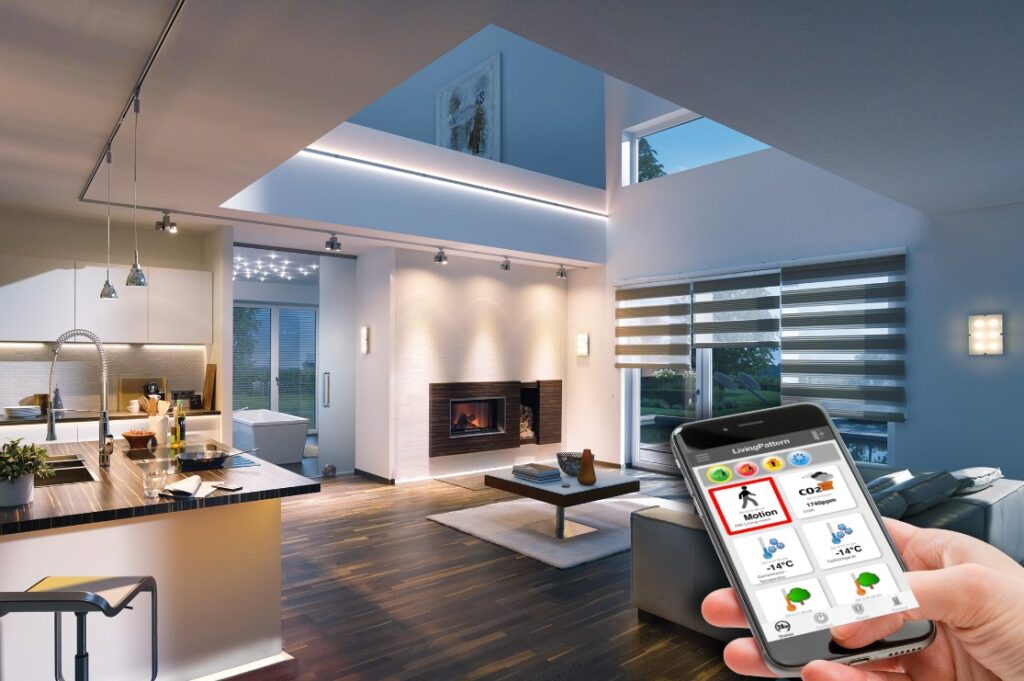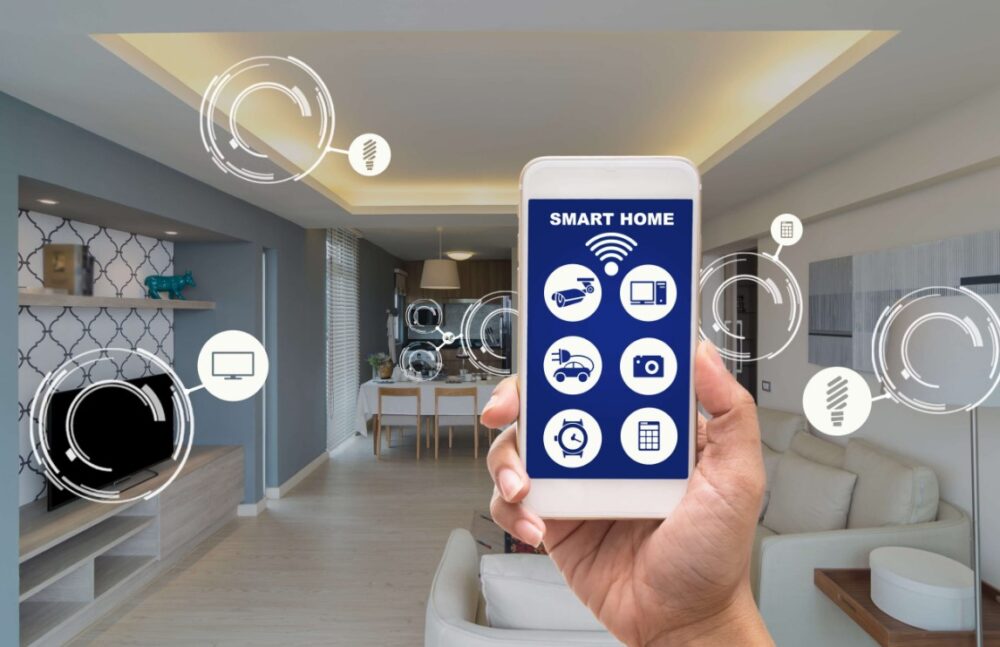A smart home is nothing more than a highly technical building with a system of sensors and detectors and an integrated system for managing all the installations a building has. The components of the system transmit information so that the building responds to changes in the indoor and outdoor environment. This means that when one system notes a change in condition, the other systems are immediately informed and take this into account in their work.
This carries a number of advantages. Namely, the functionality of the house, safety, and comfort are increased. In addition, operating costs and emissions are reduced. It should not have a negative impact on the people in it.
Recommended reading – Does blink require a subscription.
Application

Source: spencerstv.com
The building management system can be used in companies, institutions, offices, and industrial buildings. The aforementioned system integrates, monitors, controls, and reports on the operation of such elements as alarm system and monitoring, indoor and outdoor lighting, fire protection system, weather system, space heating, smoke control system, access control system, ventilation, air conditioning, and filtration control, audio-video devices, presence simulation, ICT network, renewable energy production, and storage management system.
The most important component of the system is the central unit (such as a computer), which is connected to various sensors inside and outside the building. It is also compatible with home appliances, such as central heating furnaces, radiators, fans, light sources, blinds, and window actuators. The network of wires created in this way was called a communication bus. Appropriate software makes it possible to control a smart home remotely via the Internet or a cell phone.
Properly integrated installations and programmed parameters allow a variety of uses of cooperating sensors and controllers. It depends on the ingenuity of the smart home residents. Individual sensors can be connected to multiple subsystems and perform different tasks.
The most popular smart home subsystems are:
- Weather subsystem – measures weather parameters, associated with it are actuators that open and close windows. It protects the smart building from flooding during rain and from burglary. During strong winds or gales, windows are closed and blinds are lowered. Installed sensors can also tilt windows according to temperature. The weather subsystem is also linked to heating control and adjusts the temperature of radiators to the weather outside. In addition, it is possible to adjust the lighting according to the weather outside, for example, on a cloudy day, the smart home system turns on the lights in those rooms where the household members are staying. The central unit watches over the operation of the system.
- Heating and ventilation control subsystem – the system responds to too low or too high a temperature in a particular room and decreases or increases the temperature only in that room. However, it will do this only if it detects movement. This means that it will not increase or decrease the temperature while the householder is away.
- Lighting Control Subsystem and Personalization Subsystem – the first results in automatic light switching when someone enters from the smart home. The second, on the other hand, can turn on music, radio, and TV in a place specified by the person. Each householder can specify his or her own conditions they want in a particular room, such as dimmed lights or lowered blinds.
- A subsystem for simulating the presence of householders – the capabilities provided by the smart home also prevent break-ins and theft. They allow you to turn lights on and off in specific rooms and play music. The system remembers the requirements of householders and simulates their presence based on them.
- Fire subsystem – protects the building and occupants in case of fire. It consists of a network of smoke and temperature sensors and a direct fire alarm network – sprinklers. The operation of the system is to detect the location of the fire early, activate firefighting equipment and prevent the spread of fire to other rooms. The fire protection system consists of two parts: detection – the fire panel, and control – specialized systems and external panels. In addition, the smart home is triggered by verbal messages (SMS, e-mail) about the incident, they also inform about the evacuation method. Blinds and shutters are raised, and gas is cut off.
- Monitoring and alarm subsystem – this consists of motion sensors that respond to the breaking of glass in the window, the breaking of a lock, and the crossing of a designated line by an intruder. When the system notes unwanted activity it activates alarm sirens and automatically informs the police or security company. In turn, hidden cameras record events.
System selection

Source: aspireluxuryproperties.com
Today we have many systems and software available to support a smart home. Among the most popular are:
- EIB (European Installation Bus) – which was established in the first half of the 1990s and continues to be developed. It works with alarms, heating, air conditioning, electrical systems, gas, smoke, motion, and flood sensors.
- LCN (Local Control Network) – the operation of the system relies on the standard wiring used in electrical installations, the devices need a 230 V power supply. The use of electrical network cables makes it possible to add individual smart home systems in stages. The system fully controls lighting, blinds, shutters, and heating. It also works with alarm and fire alarm systems.
- LUXOR – the system makes it possible to simulate the presence of people in the building, centrally turn off electrical devices when leaving the building, and turn on lighting throughout the building with a single button, controlling the intensity of lighting.
Advantages

Source: sirinsoftware.com
Interconnected smart home systems are perfect for emergency situations. During a fire, the fire detector sends the appropriate information to the air conditioning and ventilation system, the air intakes are closed and thus the amount of oxygen near the fire is reduced. In addition, setting the blinds in the appropriate positions will hinder the influx of air and prevent the spread of fire.
A smart home is not only about safety but also about saving money. With the installations programmed into it, you can significantly reduce the cost of operating your home, and electronic control of heating and lighting is more efficient than manual adjustment.
A smart home also means comfort. You can forget to turn off the lights or turn off an electrical appliance without any consequences. We also don’t have to worry about closing windows and lowering blinds, or even watering the garden.

























